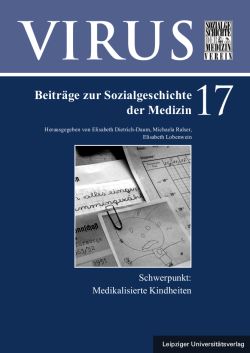
VIRUS Band 17, pp. 223-230, 2020/07/21
Schwerpunkt: Medikalisierte Kindheiten
Die neue Sorge um
das Kind vom ausgehenden 19. bis ins späte 20. Jahrhundert

In 2015, Jean-Pierre Améris brought the life of Marie Heurtin (1885–1921), a deaf-blind French woman, on the big screen. Améris’ biographical film tells the story of a girl who first developed an understanding of linguistic signs and communication at the age of ten. Focusing both on the film’s aesthetic-narrative level and its medical-historical dimension, this article aims to delineate the potential of films as an aesthetic mass medium to convey notions of deafblindness to a general public; beyond that, I will analyze and discuss the views on deafblindness in children that become apparent in the context of Heurtin’s biography.
Keywords: France, 20th century, disability studies, medical humanities, film and medicine, film analysis, biography, deafness, blindness, deafblindness